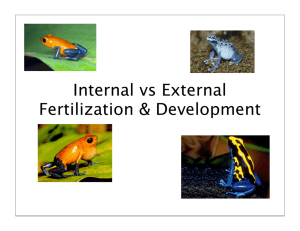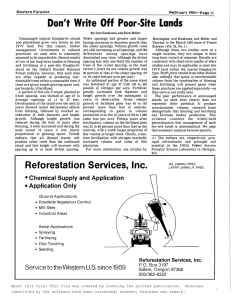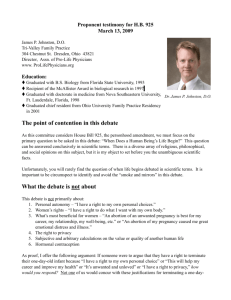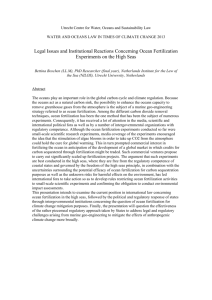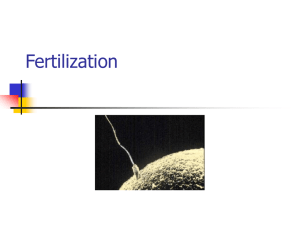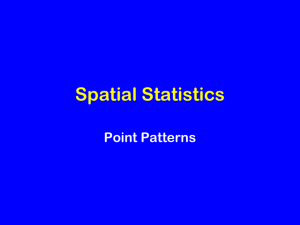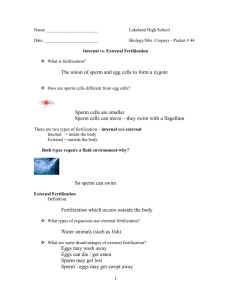Mycorrhizal responses to intensive forest management: a peak at
advertisement
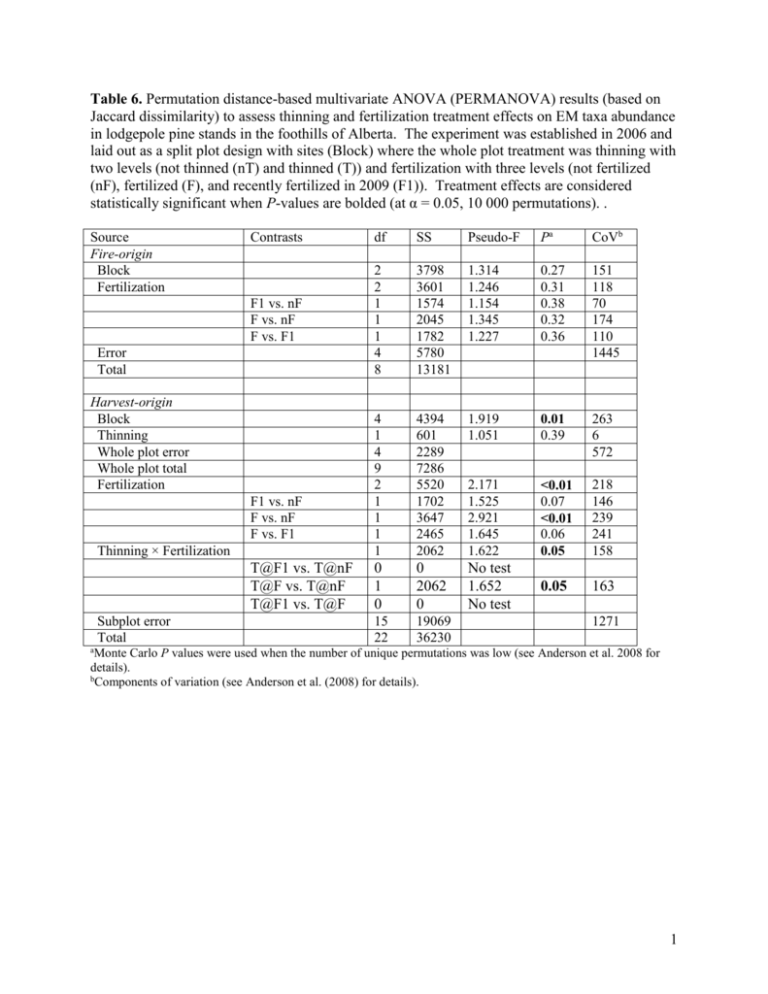
Table 6. Permutation distance-based multivariate ANOVA (PERMANOVA) results (based on Jaccard dissimilarity) to assess thinning and fertilization treatment effects on EM taxa abundance in lodgepole pine stands in the foothills of Alberta. The experiment was established in 2006 and laid out as a split plot design with sites (Block) where the whole plot treatment was thinning with two levels (not thinned (nT) and thinned (T)) and fertilization with three levels (not fertilized (nF), fertilized (F), and recently fertilized in 2009 (F1)). Treatment effects are considered statistically significant when P-values are bolded (at α = 0.05, 10 000 permutations). . Source Fire-origin Block Fertilization Contrasts df SS Pseudo-F Pa CoVb F1 vs. nF F vs. nF F vs. F1 2 2 1 1 1 4 8 3798 3601 1574 2045 1782 5780 13181 1.314 1.246 1.154 1.345 1.227 0.27 0.31 0.38 0.32 0.36 151 118 70 174 110 1445 4 1 4 9 2 1 1 1 1 4394 601 2289 7286 5520 1702 3647 2465 2062 1.919 1.051 0.01 0.39 263 6 572 2.171 1.525 2.921 1.645 1.622 <0.01 0.07 <0.01 0.06 0.05 218 146 239 241 158 0 1 0 0 2062 0 No test 1.652 No test 0.05 163 15 22 19069 36230 Error Total Harvest-origin Block Thinning Whole plot error Whole plot total Fertilization F1 vs. nF F vs. nF F vs. F1 Thinning × Fertilization T@F1 vs. T@nF T@F vs. T@nF T@F1 vs. T@F Subplot error Total 1271 a Monte Carlo P values were used when the number of unique permutations was low (see Anderson et al. 2008 for details). b Components of variation (see Anderson et al. (2008) for details). 1
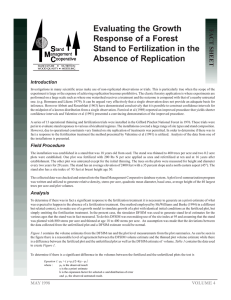



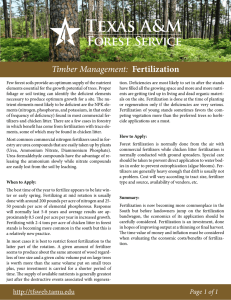


![Gametogenesis + Fertilization[1].](http://s3.studylib.net/store/data/008482401_1-8b1168b2201d2c785bae27019328f1ed-300x300.png)

